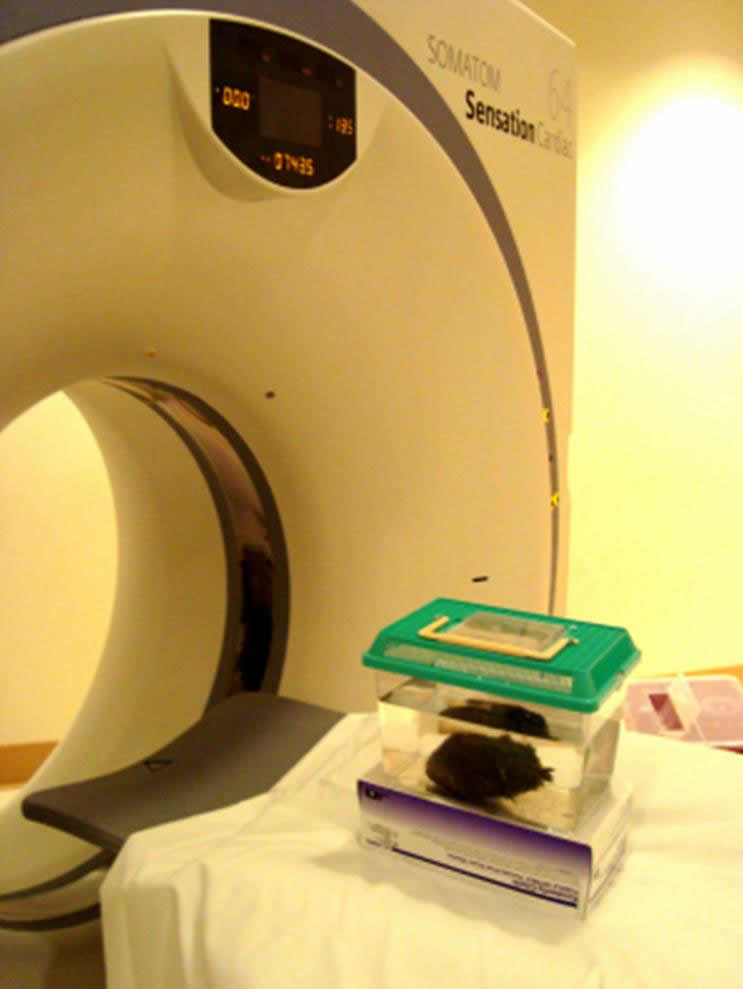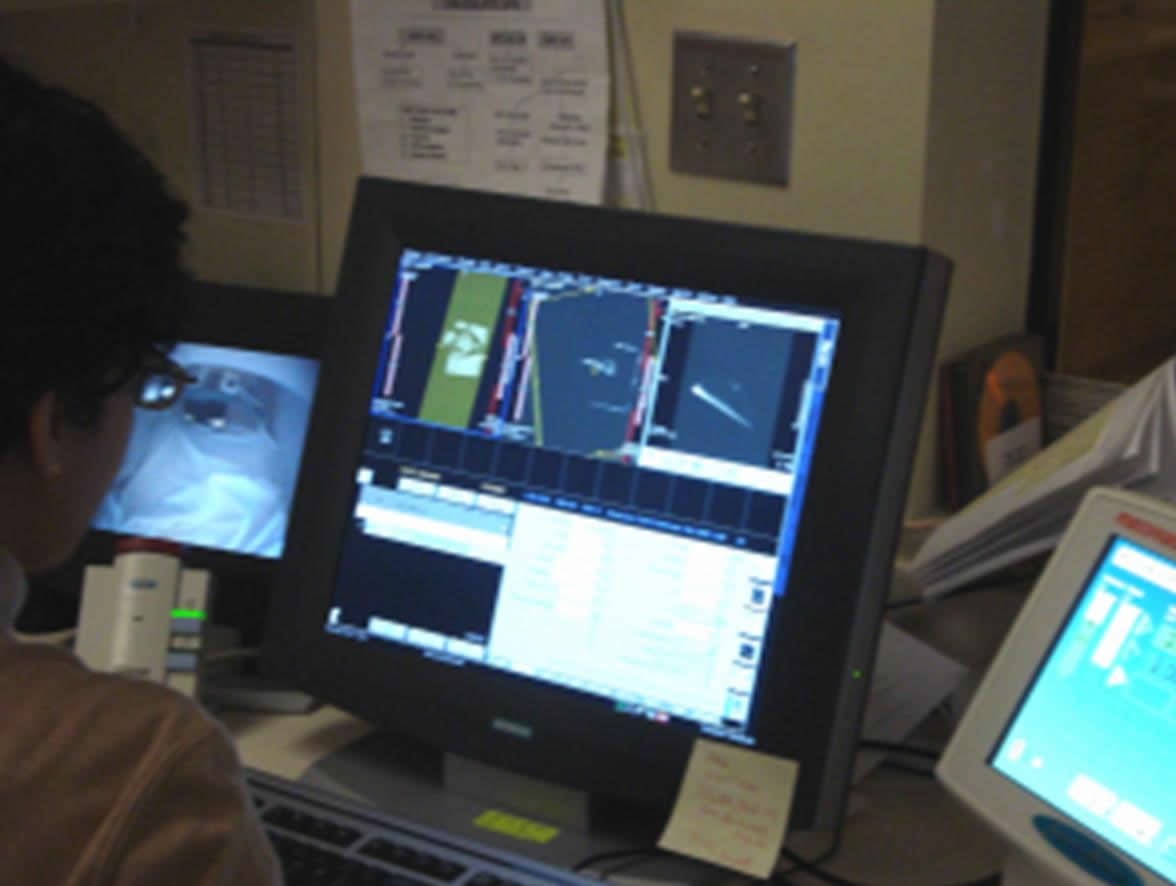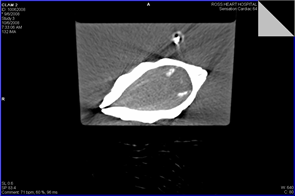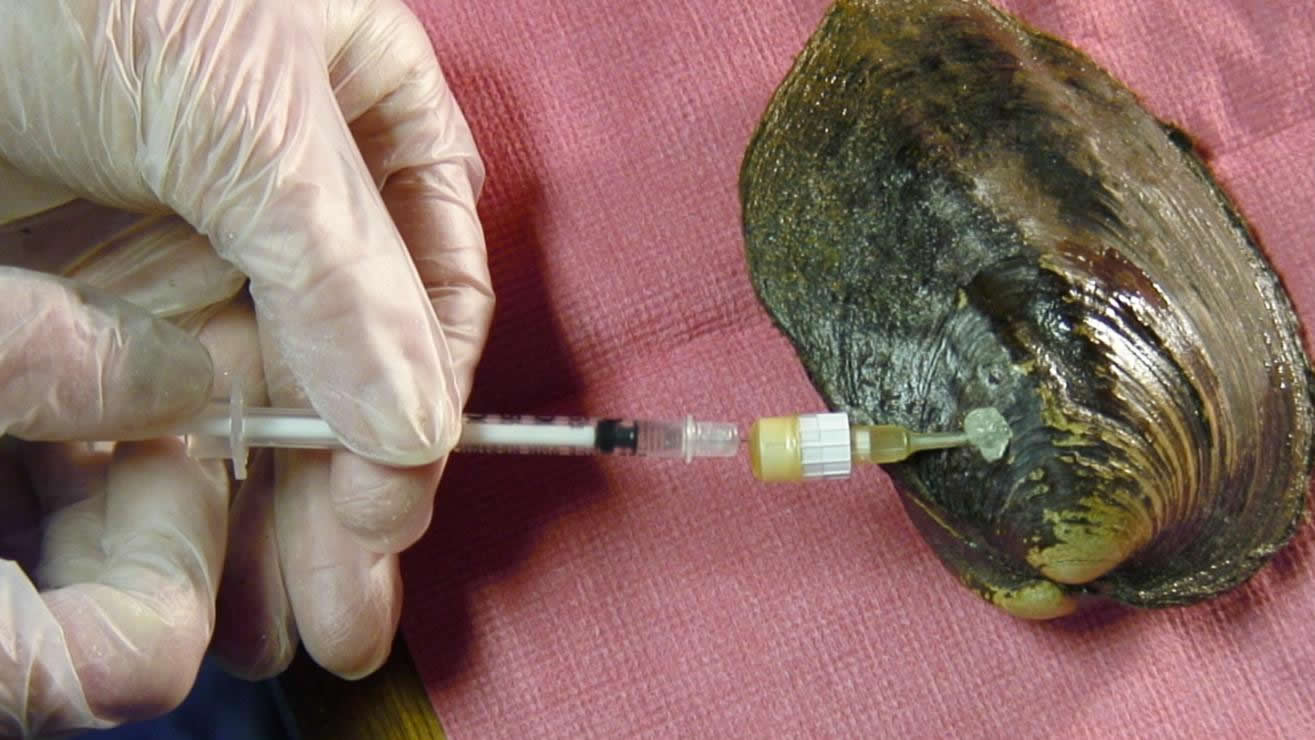
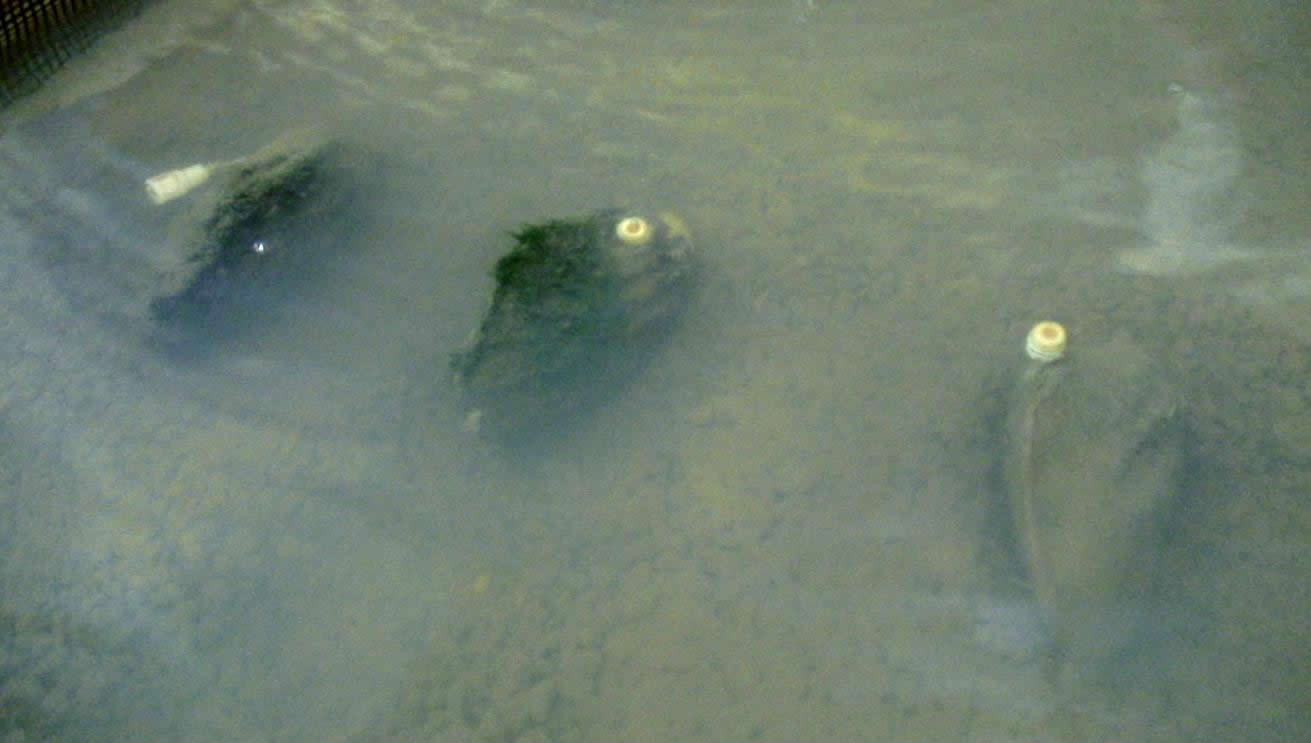
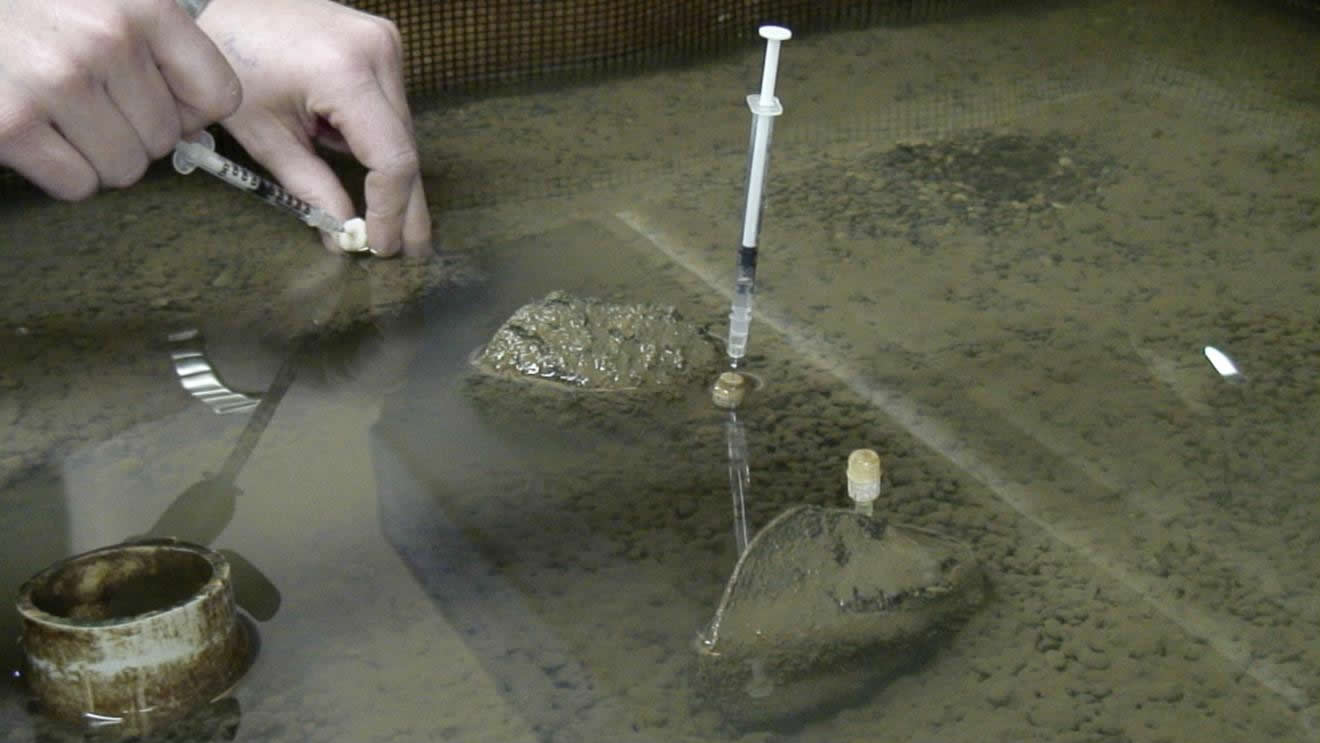
Once freshwater mussels are brought into captivity questions arise as to their health. Locked away between two shells, it is difficult to gauge whether captive mussels are healthy or not. To this end, veterinarians from The Wilds and the Columbus Zoo and Aquarium have developed a novel approach to assessing captive mussel health: examination of the mussel's blood. They hope to quantify the health of individual mussels by studying the changes in the ratios of hemolymph cells and amounts of known chemical stressors as mussels are perturbed in various ways, be it relocation, transportation, or captivity. This study is being led by Dr. Barbara Wolfe, DVM, from The Wilds. The study is funded by grants from the Ohio Department of Natural Resources Division of Wildlife and the Columbus Foundation.
The first step is establishing a baseline against which experimental studies can be compared. This includes identifying the types of hemolymph cells in a "normal" mussel. In order to sample the hemolymph without stressing the mussel, permament "heart" catheters are placed through the shells into the pericardial cavity. After a recovery period mussels may be sampled without disurbing the individual through a port in the catheter.



A detailed description of these cells is in press. A few results are shown below.


In addition to characterizing hemolymph cells, we hope to image the vascular system of a freshwater mussels using CAT scan and MRI technology. Thanks to Dr. Subha Raman, MD, of the Ohio State University Medical Center, for the opportunity to conduct this research.
